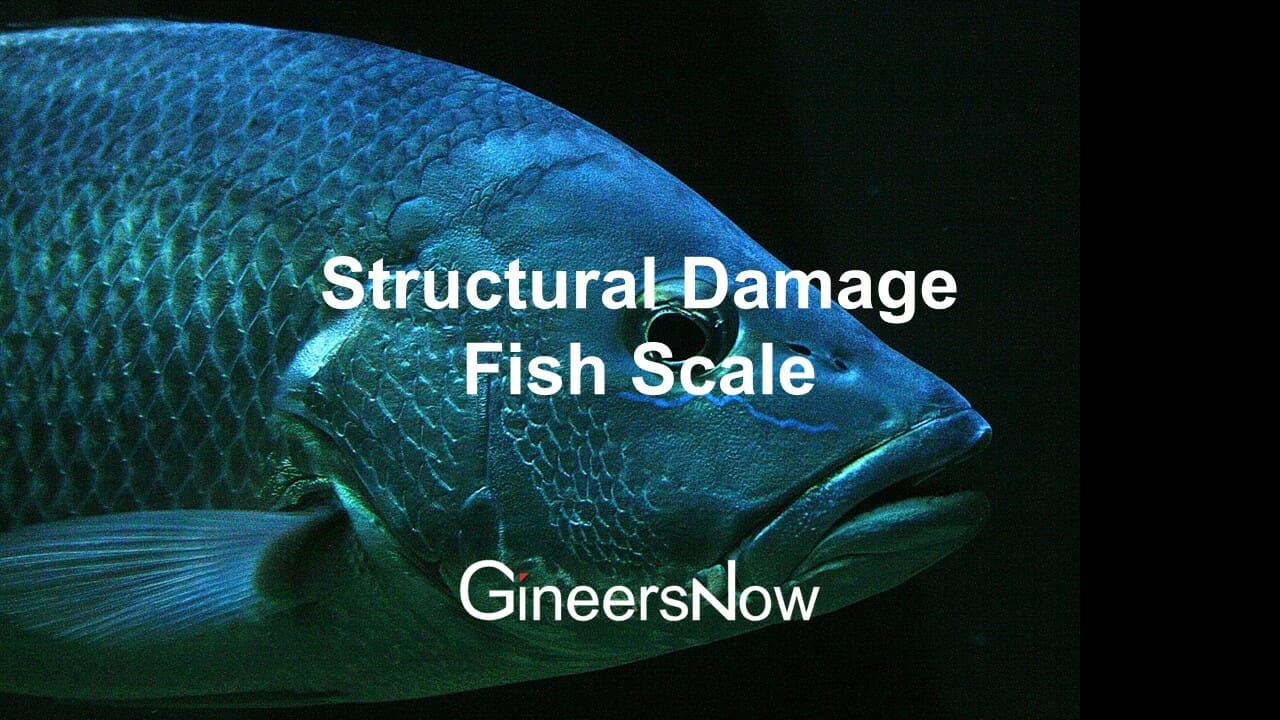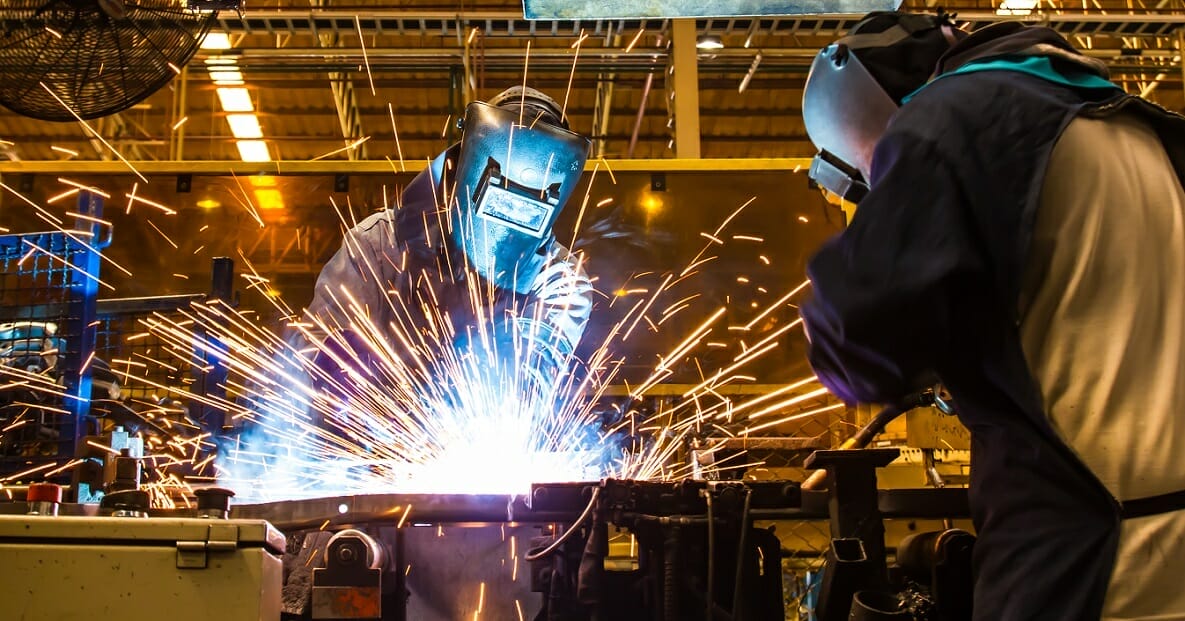Structural damage can be really difficult to monitor, especially after earthquakes. But now there is a solution, which is rather unusual, to make them visible: through fish scale coating.
German researchers have created a graphene-based coating that changes its color when deformed or damaged, like when fishes move. Nanometer-scale graphene flakes were made in semitransparent, parallel layers and tested in glass fibers.
It works just the same with iridescent fish: they derive color from their structure instead of containing pigment. That means that the coating, which has a periodically-arranged microscopic structure, interferes with light as it strikes and is reflected on them, which amplifies some visible wavelengths and suppresses others.

The same mechanism is true with colored cells in butterfly wings, peacock feathers, and skins of squid, among others.
“Structural failure usually starts with tiny cracks and deformations,” said Shang-Lin Gao, the leader of the research and specialist in composite materials at the Leibniz Institute of Polymer Research. He added, “Generally, these microscale cracks are hard to detect.”

To identify the structural damage, the graphene-based coating should be applied before the cracks happen. After earthquakes, for example, the coating will be deformed, which will have its layers compress and flatten, hence changing the way light reflects from them and affecting the color.
The new material is a kind of traffic light to warn of hidden damage in buildings and vehicles, said Gao, as it changes color depending on deformation.
When no change or damage has occurred, the coating should be red. When deformed, it should turn yellow; and when cracked on the microscale, it should turn green.

Its makers hope that this fish scale coating could change drastically how structural damage – even at the microscale – are being detected and monitored not only building and structures but also in vehicles. But Gao recognizes the need to explore more about the properties and behavior of this coating before it gets used as a structural damage measure in the real world.
Structural Failure in Civil Engineering
Structural damage is one of the most important aspects of civil engineering. It is essential to identify and correct structural damage as soon as possible in order to avoid further damage and potential collapse. There are many causes of structural failure, including natural disasters, accidents, and human error. In order to prevent or repair structural failure, it is important to have a thorough understanding of its causes and effects.

What is structural damage?
Structural damage refers to any type of damage that affects the structural integrity of a building or other man-made structure. This can include anything from cracks in the foundation to severe weather damage. Structural failure can be caused by a number of things, but most often it is the result of natural disasters, human error, or wear and tear over time.
Structural damage can have a serious impact on the safety of a structure and those who occupy it. It is important to identify and address structural damage as soon as possible to avoid further deterioration and potential collapse. Depending on the extent of the damage, repairs can be simple or complex, but should always be carried out by qualified professionals.

The causes of structural damage
There are many potential causes of structural damage to buildings. Some of the most common causes include weather-related events, such as strong winds or heavy snowfall, which can put stress on a building’s structure; inadequate or poor maintenance, which can allow for deterioration and weakening of critical components; and construction defects, which can result in instability or other problems. In some cases, multiple factors may contribute to structural failure , such as when a combination of weather and poor maintenance leads to a collapse. It is important to identify the specific cause or causes of damage in order to take steps to prevent it from happening again in the future.

The effects of structural damage
The effects of structural damage can be devastating. A collapse can cause death or serious injury, and even minor damage can make a building unsafe. It is important to know the signs of structural damage so that you can take action to prevent it.
Structural damage is often caused by natural disasters such as earthquakes and hurricanes. It can also be caused by human activities such as construction work or accidents. The most common type of structural failure is cracks in walls or ceilings. Other signs of damage include doors or windows that will not open or close properly, gaps in floors or ceilings, and leaning walls.
If you see any of these signs, you should contact a professional engineer to assess the situation. They will be able to tell you whether the building is safe and what needs to be done to repair the damage.

How to prevent structural damage
As the weather changes and colder temperatures set in, it’s important to take steps to prevent structural damage to your home. Here are a few tips:
1. Inspect your gutters and downspouts regularly, and clean them out as needed. Clogged gutters can cause water to back up and seep into your home, leading to mold and mildew growth.
2. Make sure your home is well-insulated. This will help keep warm air inside during winter, and cool air inside during summer. Poorly insulated homes are more likely to experience drafts, which can lead to moisture buildup and eventually rot or mold.
3. Check for cracks or gaps in your home’s exterior, especially around doors and windows. These areas can let in moisture, which can cause wood rot or insect infestations.

The importance of repairing structural damage
Structural damage to your home can cause a variety of problems. If left unrepaired, structural damage can lead to expensive repairs, or even cause your home to become unsafe.
Structural damage is often caused by severe weather, such as hurricanes or tornadoes. It can also be caused by flooding, or even by the weight of heavy snow on your roof. No matter what the cause, it’s important to have any structural damage repaired as soon as possible.
Ignoring structural damage can be dangerous, and it will only get worse over time. If you’re not sure whether or not something is structurally sound, it’s always best to err on the side of caution and have it checked out by a professional. Repairing structural failure may not be cheap, but it’s nothing compared to the cost of having to rebuild your entire home.

Conclusion
In conclusion, it is important for civil engineers to be aware of the potential for structural damage when designing and constructing buildings. With proper knowledge and understanding of the risks involved, engineers can take steps to minimize the chances of disaster.
By understanding the causes and effects of this type of damage, engineers can take steps to prevent it from happening. In addition, if structural damage does occur, engineers can take steps to repair it and minimize its impact.
Source: Chemistry World












